

Video Pattern Generator (1998)
The construction of a working Composite Video Pattern Generator is explained, starting with the basic concepts of color reproduction and image transmission, the theory behind the current methods used in analog color television, concluding with a practical approach to build the proposed unit. This two-chip design can be used as a teaching tool in the video field as well as a laboratory instrument, useful for repairing and adjusting analog television receivers. While this instrument is in no way intended to be a commercial set, the result is a high quality video equipment.Hardware components have been reduced to a minimum, making this project both affordable and easy to build; the software takes care of most of the hard work, and it is available for download, both source and object codes.
The project documentation can be found in English and Spanish, under "Original documents" in the download section.
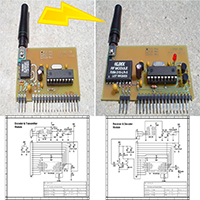
Modular General Purpose RF Link Using Manchester Code (2011)
A modular, general purpose RF link is presented, both hardware and software components. Once assembled, the units, transmitter and receiver, can be used by themselves or connected to any other circuit, adding RF capabilities to any design. The modular concept makes them suitable to be used even in a breadboard, with no deterioration of the RF signal. This concept extends to the microcontroller's software, written in C, where the key coding and decoding functions have been grouped in 2 separate files, the "drivers", one for transmission and one for reception. The data is sent using the Manchester Code, for added reliability of the link. From the user's point of view, the "drivers" are transparent; when the data is ready for transmission, the TX function is called. At the receiver side, the RX function will return the received data. All TX and RX algorithms have been solved within these "drivers". This design provides absolute flexibility and teaches the reader how to implement a complete solution, the foundation from where to build more powerful applications.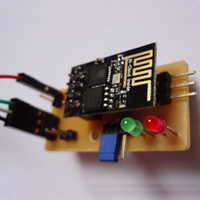
ESP8266 - Getting Started (2016)
Connectivity and IoT (Internet of Things) are the next steps in home automation: devices that can "talk" to each other and with the user, either within the home or all over the world. And this is not limited to the newest electronic gadgets, which are born already connected; it will eventually also include home appliances and everything that is electrically powered. Behind all of this there is one fundamental concept: Wi-Fi connectivity. The ESP8266 is a low-cost Wi-Fi module, a self-contained SoC (System on Chip) with integrated TCP/IP protocol stack that can provide full access to a Wi-Fi network. Therefore it is the fundamental block of any connected device, and has gained huge popularity among the electronics and programming communities. Here I will present the concepts and tools needed to start working with the ESP8266, setting the foundation for a more in-depth analysis of connectivity in next projects.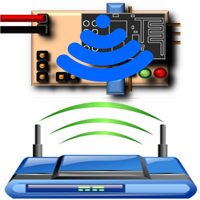
ESP8266 - Web Server and Connected Devices (2016)
"Connectivity" is the keyword that may define the ESP8266. With its Wi-Fi capabilities this module opens a wide range of possibilities, enabling remote control commands and telemetry information to be shared among devices and with the user, within the home network or open to the web. Here I will explore the fundamentals of Wi-Fi connectivity, from the creation of a simple web server to the construction of a more complex web interface, that will let us control the ESP hardware, i.e. the GPIO ports. Two Wi-Fi modes will be discussed, the ESP configured as an "access point" and as a "station", with dinamic or static IP address. At the end, the foundation for much more complex controlled devices will be set, capables of driving larger loads than a simple LED, but all based in the same basic principles.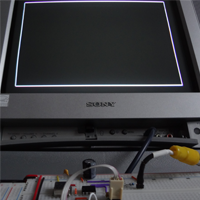
TV Synchronism Generation with PIC Microcontroller (2016)
With the widespread conversion of the TV transmission and coding standards, from the early analog (NTSC, PAL, SECAM) systems to the modern digital formats (ATSC, DVB, ISDB, etc.), added to the price reduction of larger screen devices, old analog TV sets have become obsolete, unless they are used with converter boxes or connected to analog content generators, such as video game consoles with analog output. Here I will present a method to generate NTSC TV synchronism signals, so the old analog TV sets can be used again to show user-generated content.
The complete working program, written in CCS C, is explained step by step, so the user will have the ability to modify it at will, to be used as a standalone circuit or as part of a larger video generation system. A few working examples demonstrate how to change the main program routines to show simple patterns on the TV screen.
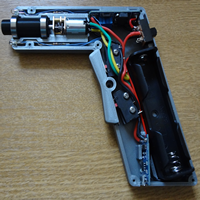
Rechargeable Electric Screwdriver (2020)
The screwdriver is an essential tool in any workshop; dealing with electronics, small screwdrivers with multiple interchangeable bits are required to assemble / disassemble the units or the components inside. Usually no much torque is required to perform these operations, since it is not heavy duty equipment. We will review the design and construction of a rechargeable electric screwdriver, step by step, using standard components that are readily available and affordable. The unit will feature a lithium-ion battery, with all the required charging and protection circuitry; a micro USB port will make the charging process simple and standard: no external power adaptor required, just any available USB port. A toggle trigger mechanism will turn the motor clockwise or counterclockwise easily. Finally, an ergonomic design and front illumination give this tool a professional look and feel. See the introduction video.
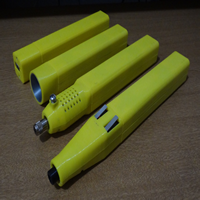
Lithium-ion Batteries Safety and Tool Design (2020)
Lithium-ion batteries have become the energy storage technology of choice for diverse applications, from portable phones to electric vehicles. Their high energy density characteristics made them the ideal choice, balancing light weight with increased capacity, compared to other existing technologies. But, with all the advantages comes a notable disadvantage: they are dangerous if not used properly. These batteries may catch fire, or even explode, if they are overcharged (overvoltage) or short-circuited (overcurrent). In addition, they may be damaged if they are discharged beyond a certain threshold (over-discharged). Here we will review a proper way to use Lithium-ion batteries so they can be incorporated into your next project safely, and a practical application for do-it-yourself tools..